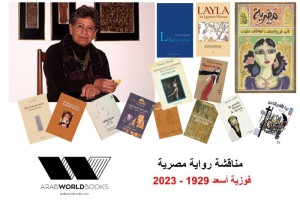A merchant has to go on a long journey, leaving behind his beloved wife. Saddened, he asks his trusted birds, a mynah and a parrot, to keep her entertained while he is away. After his departure, the wife ventures to the roof-top and glances a handsome stranger. Love and lust overcome them. Through a go-between, they set a time to meet that night. Before departing, she tells the mynah of her plans. The mynah pleads with the mistress to change her mind. The wife, enraged at this dousing of the bucket of cold water on her flamed passion, tries to ring the neck of the bird who escapes. She, then, turns to the parrot. Having seen the fate of the mynah, the parrot agrees to her enterprise but asks that she listen to his tale which will help her become a wise and supreme seductress. She agrees and he starts the tale and the time for the appointment passes by. Such remains the case for the next seventy nights as each night, she gets ready to leave and the parrot continues the tale causing her to miss her rendezvous. When the merchant returns, the parrot tells him the entire saga. The merchant sees that the wise parrot had saved the honor of his home. The wayward wife repents and is forgiven. This story originates somewhere in the mists of kavyas and jataka tales but comes to us written in the sixth century Sanskrit tale Sukasaptati: Seventy Tales of the Parrot. Here is a translation for purchase. Ziya al-Din Nakhshabi (d. 1350) was born in Nakshab, southwest of Samarkand. He migrated to India, along with many other Sufis in the early fourteenth century, and set his shop in Bada'iun. The sukasaptati had already been translated into Persian and Nakshabi set to recreating the stories in a simpler, as well as Islamic, vein. His rendition, entitled, Tuti-Nama: The Book of the Parrot was completed around c. 1335. Nakshabhi had 83 tales in his rendition with the parrot becoming a erudite hafiz-i Qur'an spinning tales both from the Persian chronicles as well as the original Sanskrit ones. With some changes. The mynah's neck is broken by the enraged wife. And when the merchant returns, he does not forgive the adulterous intent of his wife. He beheads her and shaves his own head and renounces both women and possessions for the service of God. Nakshabhi's parrot next finds itself in Rumi's Mathvani. Tuti-Nama was abriged in the seventeenth century by Dara Shikuh probably from the special manuscript produced for Akbar. This shorter version - 30 odd tales - was translated into Arabic, Turkish, English, Spanish, Portugese and Italian by the late 19th century. The Spanish and Portugese versions had the merchant become a nobleman or knight and the trading trip become the war front. The woman is not slayed on return but the go-between often is. The parrot usually has but three nights to keep the woman's attention. The Italian version, especially the one that ends in Italo Calvino, differs remarkably. The parrot reveals himself to be a prince. On the streets of Lahore or Singapore, you can purchase your fortune from a parrot. Tuti Faal: You ask the question, pay the man, who feeds the parrot a nut, and the parrot goes and picks up an envelope from a lineup and the envelope has your answer. The parrot can also do Qur'anic faal. The parrot crosses out of lore into the real world.
Upcoming Events

Joseph Conrad's Heart of Darkness Discussion
April 27, 2024
Join us for a special discussion of Joseph Conrad&...

A writer, a vision, a journey: a conversation with Francis Boyle
February 24, 2024
This event took place on 24 February 2024 Yo...

Discussion of Fawzia Assaad’s An Egyptian Woman
November 25, 2023
In celebration of the life and outstanding achieve...

Toni Morrison's The Bluest Eye, A Presentation and Discussion
October 28, 2023
This presentation and discussion of Toni Morrison&...
